I am preparing for winter.
- cover crops – I cleared the tomatoes and weeds, added compost and sowed winter rye and crimson clover. A few years ago I used hairy vetch, which worked well and next year I will order more since the local supplier, who originally sold me the seed, no longer carries it.
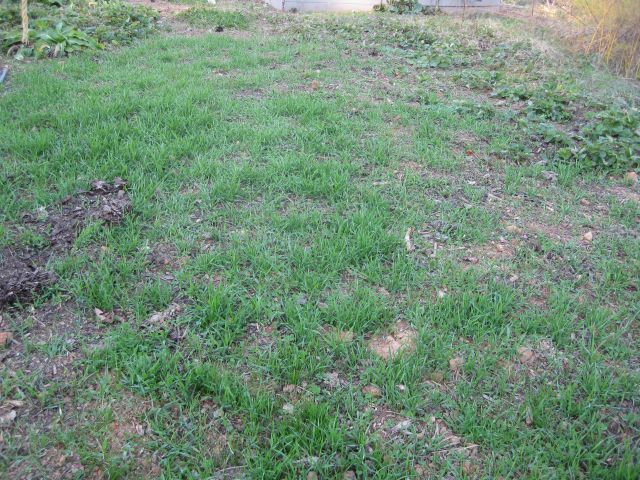
- firewood – during the year I cut a new 5 foot wide route through the woods and I steered the path to avoid the larger trees. I had to uproot and remove smaller trees and I cut their trunks into 5 foot lengths and stored under cover for fuel for winter. I am now chain sawing the wood into 2 foot lengths to fit the grate. Last Sunday was cold and the wood burnt well.
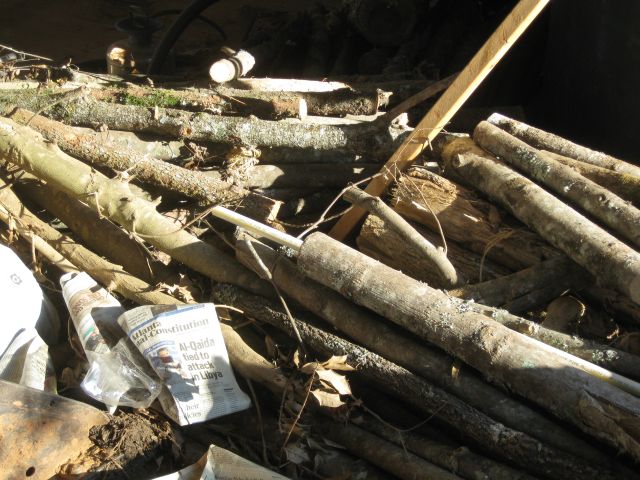
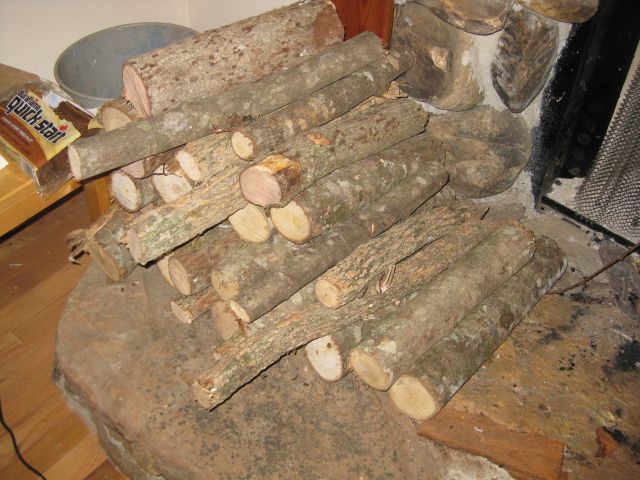
- mushrooms – I built a mushroom house, which I filled with logs impregnated with sawdust spawn, and then neglected to water. A few weeks ago I watered the logs and some oyster mushrooms have surfaced. Encouraged, I shall water more regularly. Also I must affix a gutter to the roof of the shelter and direct the rainwater onto the logs – this is obvious and I should have done it at the outset.
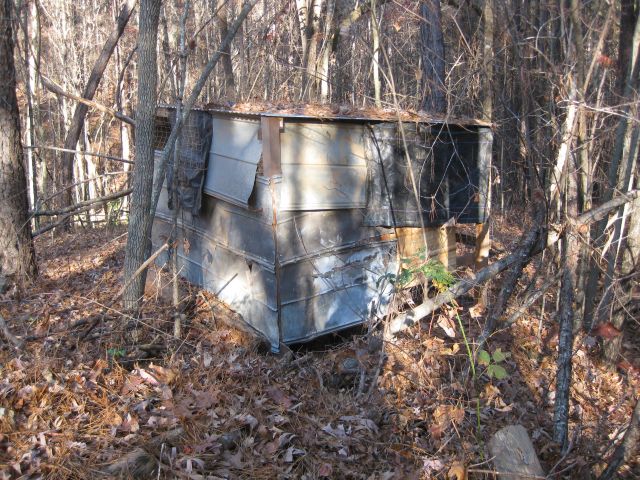
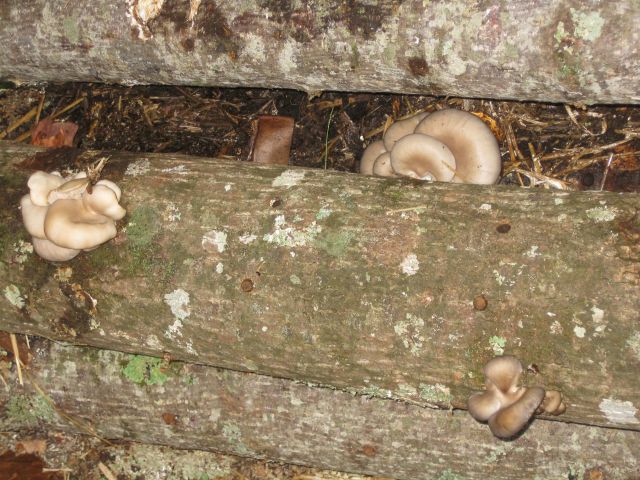
- winter growing shelters – last year I was able to purchase a number of wooden windows for a $1 each and constructed rudimentary cold frames. This year I would like to create a larger structure but to do this I need posts. Pressure treated posts would be ideal but I do not want to pollute the soil or my vegetables. So the options are cedar wood (which rots with time), composite posts (which are expensive and may distort), metal structural posts (ideal but where will I find them) or use some oak trees from the woods (cheapest, self reliant and maybe the way to go). In the meantime I painted the wooden windows, first with Kilz primer and then a good quality exterior latex.
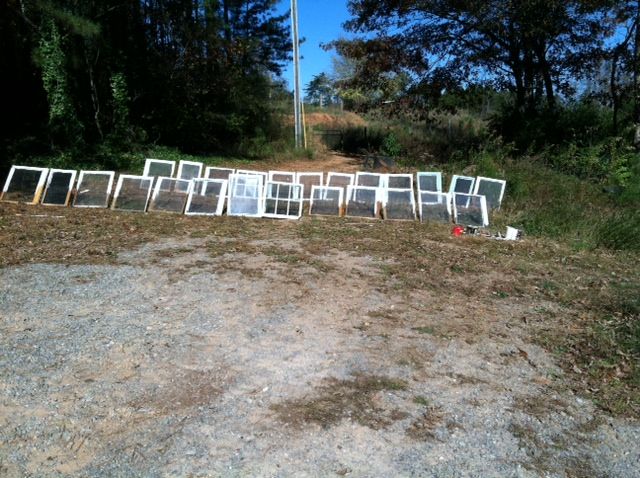
- seed gathering – now the cosmos and zinnia have finished flowering and set seed, I sortie out to gather seed for next year.
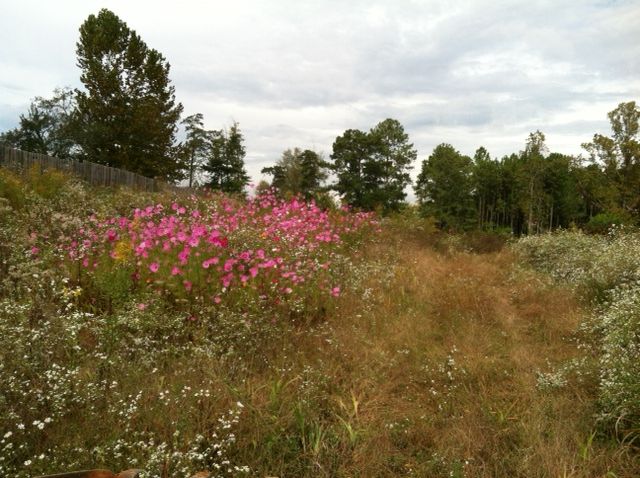
- rainwater collection – when it comes to my rainwater harvesting systems the invariable rule is that it will fail wherever I have not checked. The main flow from the house roof went through a “Y” and the “Y” leaked in small amounts and eroded the ground supporting the connection so one of the 4″ pipes disconnected (maybe also assisted by the rodent hunting activities of my dog).
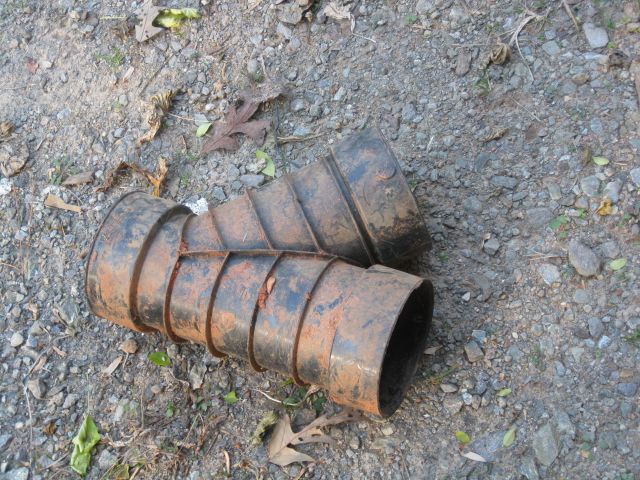
I replaced the old Y with a more substantial Y, I rebuilt the underpinnings and I secured the inlet pipes to the Y with duct tape and am resolved to keep a good eye on this joint and have instructed Trudy to leave the water drainage pipes well alone.
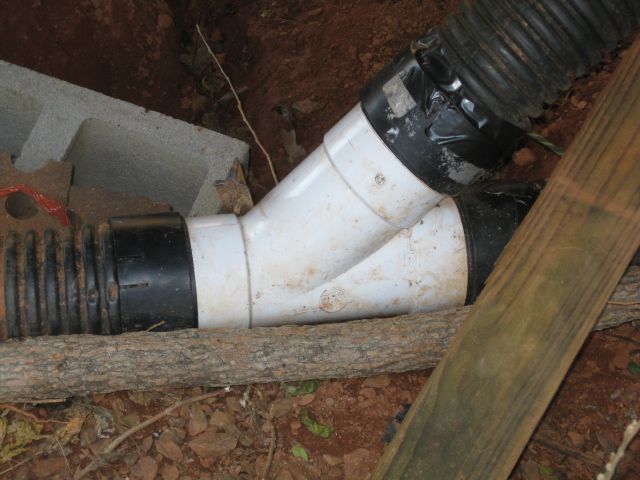
- winter vegetables – I decided to seed more lettuce since I already have sufficient kale. The lettuce was seeded initially into 3/4″ soil blocks and are now in 2″ soil blocks in the greenhouse. I will probably grow some full size in the greenhouse and the remainder will be ground planted once I have figured out the construction of my new windowed winter shelter.
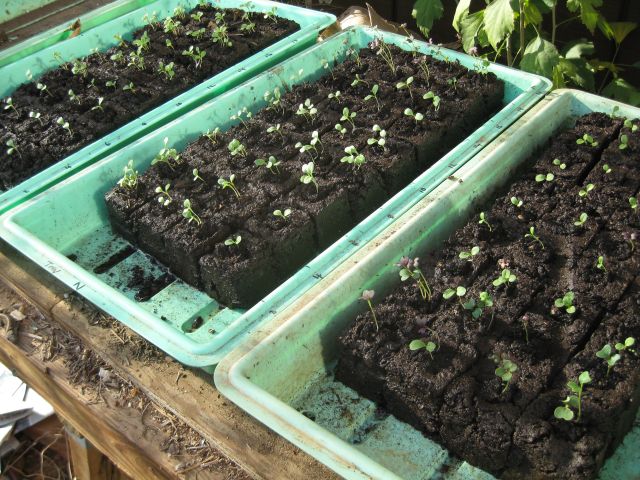
- cuttings and acorns/nuts – I have taken cuttings from trees I would like to replicate like mulberries, pears (my neighbor’s pear tree was prolific this year and my Giant Korean, which bore for the first time, was excellent), cherry, plum and one of my neighbor’s apple trees which had very sweet small apples. I know with the apple tree I may have a problem with the root stock. Perhaps next year, when I am successful with grafting, I will graft scions to root stock. As for nuts – my other neighbor gave me a dozen pecan nuts from his magnificent pecan tree and I also buried Ohio buckeye nuts, acorns from selected oak trees and nuts from other local trees. The cuttings and nuts are in an area which I visit and weed and water most days, with good sun exposure and the soil is well mixed with compost. So I am hopeful. If the cuttings are viable I may transplant them in spring next year or, better, wait till fall and then plant them out with the nut seedlings.
- in earlier posts I mentioned other activities such as terracing the hill in anticipation of delivery of assorted fruit trees promised for the end of November, and winterizing the bee hives and the chicken coop. When really cold weather threatens I will wrap my fig and other cold sensitive trees in swadling and leaves to prevent die back.

the local supplier, who originally sold me the seed, no longer carries it.
This is a problem that I have been concerned about so I’m focusing on crops from which I think that I can harvest seed before chopping and dropping – I don’t till. Crops like buckwheat, rye, peas, soy, Daikon radish. In order to capture the most nitrogen from the nitrogen fixers, I’ll need to chop and drop them before they start to make seed. That means that I’ll either have to have a seed growing area or let some of them go to seed.
Regards,
Mike
I am trying to become self sufficient as well. I think with growing, the big investment occurs in the beginning with preparation of beds and structures and developing the first crops. This year I have propagated my strawberries and rasp- and black-berries and, as mentioned in the post, my garlic. It feels good to slowly gain autonomy. I should have done more to preserve the hairy vetch – next time. Have you ever needed to use innoculant for your nitrogen fixers?
Have you ever needed to use innoculant for your nitrogen fixers?
No. For me there are too many unanswered questions. Why do I need an inoculant if my soil is rich with green material compost? What did we do before inoculants were commercially available? Two years ago, we grew soy in subsoil that had had a bit of compost and grass clippings dumped on it the previous year. The soy did well. Could it have done better with an an inoculant? I don’t know and it really doesn’t matter because we were quite pleased with the yield. Now if I were a farmer making payments, I’d need to squeeze every last bit of yield so I’d probably be tempted to inoculate.
Perhaps inoculants have been developed in response to commercial agriculture’s economic need to maximize yield. Perhaps they have been developed because of the damage that commercial agriculture does to the soil.
Our approach is to mimic nature as much as possible. We use only plant material in our compost. In most of our raised beds, we only top dress with grass clippings during the growing season, ie, mulch and whatever we have in our compost piles in the fall and spring. We will turn it in but only enough to cover it so that the decomposition process is speeded up and there is minimal loss to the air. We’re in the process of dedicating planting areas to growing perennial grasses that can be scythed and piled into compost piles or used on beds as a mulch that will break down into soil.
Steve Solomon talks about sheet composting which describes what we do. – http://www.soilandhealth.org/03sov/0302hsted/030202/03020205.html
I also don’t use innoculants. I visited a much touted organic farm and to my surprise their hairy vetch did not have nodules on the roots. They also applied the full array of organic “medicines” which may have influenced the outcome..
I enjoyed listening to an interview with Steve Solomon where he cautioned on the use of dolmitic lime in some situations. I also paid the nominal fee to guiltlessly access the many titles in his library, which have helped me a lot.